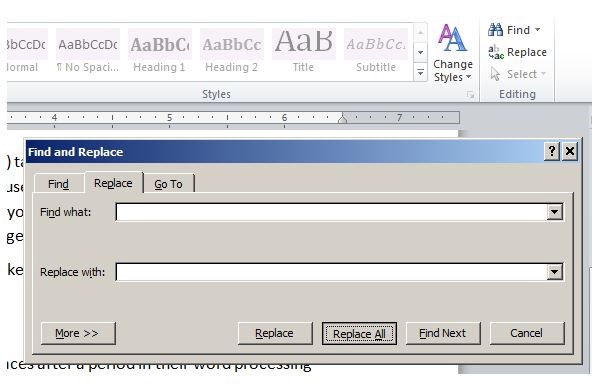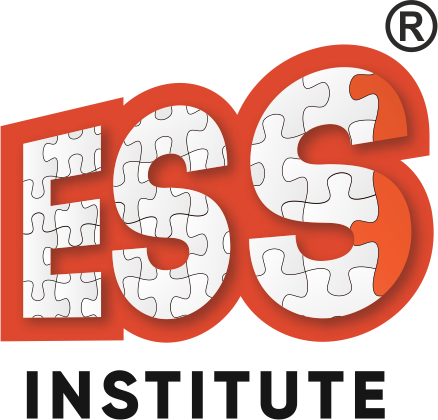Using cmoputer daily for study purpose or office use or to work professionally as freelancers can be tiring. But we at ESS institute, Delhi’s best computer training institute, have you covered whether you’re a tech-savvy professional, a student, or just someone learn use of computer. Here is the list of some top tips and tricks to make the most of your computer and work efficiently to save time and energy. Try them out right now.
Keyboard Shortcuts
Have no idea of any shortcuts? You’re squandering time. If you use Windows, visit Microsoft Support, and if you have a Mac, visit Apple Support. All of these crucial key combinations should be noted and practiced. They’ll save you a ton of time, and you’ll quickly become used to utilizing them. Few examples of shortcuts are:
- Ctrl+X = Cut
- Ctrl+C = Copy
- Ctrl+V = Paste
- Ctrl+Z = Undo
- Ctrl+Y = Redo
- Ctrl+B = Bold
- Ctrl+I = Italic and so on…..
Make use of the Taskbar, Menu Bar, and Spotlight Search to Launch New Programs
The quickest way to start a new program on a Windows or Mac computer is not by looking for the desktop shortcut icon and clicking it. Not at all!
In OS X, pressing Command and space will move your mouse to the Spotlight Search field in the top right corner. There, you may input the first few characters of the software you want (for example, OUT for Outlook), and it will appear instantly. When you see the desired app, press enter.
Similar fast searches are available via the Start button in Windows 7. Alternatively, you can just pin your most used apps to the taskbar. Simply use your default method to run the desired apps, and then do a right-click on the associated Taskbar icons. Choose to “pin this program to the taskbar” and it will remain there perpetually.

The same method applies to Mac users who can drop any application icon into the Menu Bar by accessing the Applications window in Finder. The next time you wish to start the software, it will be there for you to easily access. You can simply drag and drop these icons at any moment to change their order on Windows or Mac.
Password Manager
If your memory is very poor, this is an excellent method to save time. Use the autofill and password manager to preserve all your information if you are the only one who uses your computer. You won’t have to enter your address information each time you purchase online, which will save you time. If the password manager is configured, your computer will automatically log you in with only a click each time you go to log in.
Additionally, it expedites your online tasks, whether you’re browsing Facebook or reviewing your bank statements.
To search a website or document, use Ctrl+F
Press Ctrl+F to locate a certain term on a website or in almost any type of document (PDFs, term documents, etc.). Depending on the program you’re using, a small search bar will appear in the top right or left corner. If you enter the desired term, the computer will highlight all instances and, in certain situations, lead you to the first one. Depending on the program, you can navigate to the next or previous instance if there are numerous instances by using the arrows that often show in the search box.
For Example: If you wish to look for a certain subject’s syllabus from a college-provided consolidated syllabus pdf. Simply typing the subject’s name after hitting Ctrl+F will cause you to go ahead to that section immediately.

Scroll faster using Space Bar
Using the mouse wheel, the pointer on the scrollbar, and most definitely the down arrow key to navigate through a lengthy Web page (like a Buzzfeed listicle) takes forever. Instead, jump down one full screen at a time by using the spacebar. Each time you hit the spacebar while holding down Shift (Shift+spacebar), a whole screen will scroll up. Keep the space bar down to scroll to the bottom of the page as quickly as possible.
Check to determine whether the pointer on the website is not in a text field if using the space bar doesn’t seem to have any effect.
Use of Auto-Filter
Start taking advantage of your auto-filter if you have Gmail. Your email can learn to organize itself this way! To learn how to set it up, you can refer to Google Support’s detailed instructions.
The Right Click Can Almost Immediately Correct Poor Spelling
Many people are aware that in Microsoft Word, a red squiggly underline indicates that a word has been misspelled (or at the very least, that Word does not recognize it). Fewer people are aware that Firefox and Chrome both use the same spelling convention when checking words.
When typing on Facebook, Gmail, or any other website when you get that red squiggly warning, simply right-click the word to view recommended fixes.
Mac users should also be aware that OS X has the ability to automatically repair spelling mistakes by emphasizing them in blue to draw your attention to them (so you can double-check the change). Another Mac tip is to right-click any word to bring up the dictionary definition by using a three-finger touch on the trackpad.
Use Find/Replace
People who gripe about double-spacers are just slightly worse than those who continue to use double spaces in their word processing documents after a period. Why? since a straightforward find/replace might easily clear them up.

The Replace tool in Word is located in the far rightmost section of the Home menu tab. Or, for an even shorter cut, simply hit Ctrl+H. Put two spaces in the “find” field of the dialog box and one space in the “replace” field. Although it doesn’t appear to accomplish anything, it does. Once you click “replace all,” you’re done.
To Search Specific Domains, Include “site:”
Any time “site:” is included in a search, the results are only shown for the specified domain. This works on pretty much every major search engine, including Google, Bing, Yahoo!, DuckDuckGo, and others.
For Instance: Many newspapers were bombarded with news on the Odisha accident, but you only want to read the news from the Economic Times. You may get other websites with this news if you just type “Odisha Train Crash News.” However, if you add “site:Economic Times.com” to the search query, you will only obtain results from that website.

Closed a Tab by mistake?
Don’t rip out your hair if you accidentally closed a tab for a crucial web page! By using CTRL + SHIFT + T on a PC, you can save spending time looking for that website’s URL again. Simply press CMD + SHIFT + T if you’re using a Mac.
There are a few additional useful methods you can follow to save time and effort. These are very basic considerations that one should make when using a computer.
- Spend a moment unsubscribing from grating newsletters and marketing emails.
- Separate your work and personal life.
- To prevent confusion, arrange your files in the appropriate folders.
- Keep unpleasant wallpaper off your desktop. It has an impact on your output. So, keep it simple and clear.
- Eliminate the clutter on your desktop.
- Clear the trash bin of your computer frequently.
- Remove/Uninstall any outdated or unnecessary software.
- Organize your bookmarks for the websites you visit the most frequently.

